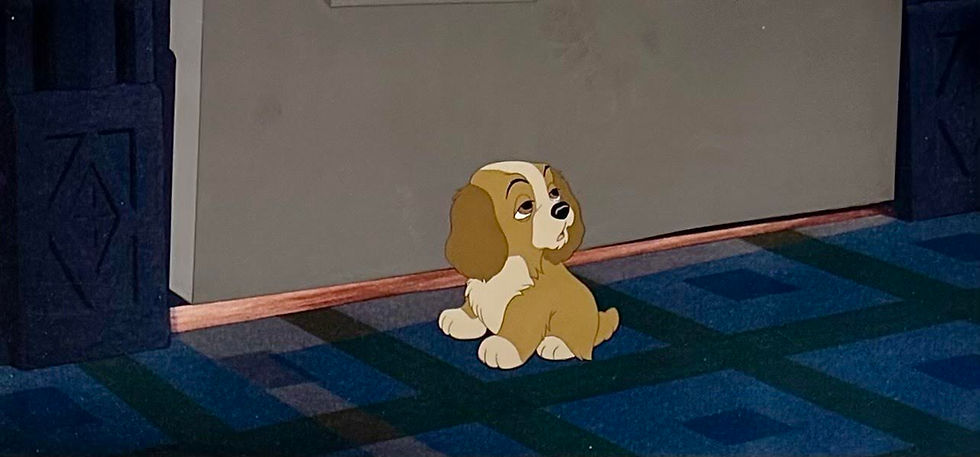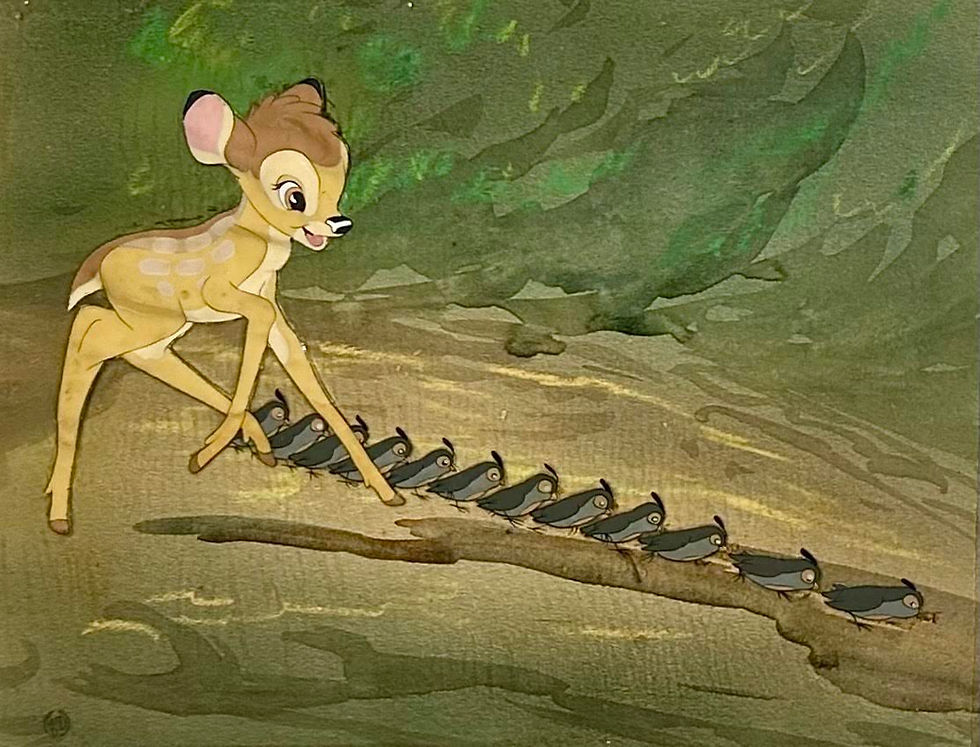Original Production Animation Drawing of Stromboli from "Pinocchio," 1940
- Untitled Art Gallery

- Apr 18, 2020
- 2 min read

Original production animation drawing in red, blue, green, and graphite pencils of Stromboli from "Pinocchio," 1940, Walt Disney Studios; Numbered C72 in pencil and production numbers stamp lower right; Size - Stromboli: 3 3/4 x 6 3/4", Sheet: 10 x 12"; Unframed.
"Pinocchio," 1940 was the second animated feature film produced by Disney, and followed on the success of "Snow White and the Seven Dwarfs." 1937. It was released to theaters by RKO Radio Pictures on February 23, 1940 and was based on the Italian children's novel "The Adventures of Pinocchio" by Carlo Collodi. The general plot of the film involves an old wood-carver named Geppetto, who carves a wooden puppet that he names Pinocchio. One night the puppet is brought to life by the Blue Fairy, who informs him that he can become a real boy if he proves himself to be "brave, truthful, and unselfish". Pinocchio's journey to become a real boy is challenged by his encounters with an array of scrupulous characters. "Pinocchio" became the first animated feature to win an Academy Award; it won for both Best Music - Original Score and for Best Music - Original Song for "When You Wish Upon A Star." Most critics and audiences agree that "Pinocchio" is among the finest Disney features ever made, and one of the greatest animated films of all time. In 1994, it was added to the United States National Film Registry as being "culturally, historically, or aesthetically significant."
Although Pinocchio encounters a wide range of antagonists, two of the cruelest are the Coachman and Stromboli; the evil puppeteer, showman, and gypsy whose only goal was to make money. Both the Coachman and Stromboli were voiced by Charles Judes who added a heavy Italian accent. Stomboli is also the only Disney Villain who cursed, however it was obscured by being done in Italian. Hamilton Luske directed the live-action footage of most of the actors posing as characters for Pinocchio. Luske admitted to the fact that the character, acted by story man T. Hee dressed in full gypsy garb, was a bit understated but that he did not want Stromboli's animator Vladimir Tytla doing "too many things." Tyla was a tall and imposing personality and he had a physical build that was similar to that of Stromboli, which may account for him being given the character to animate. It is known that while Tytla was working out sequences for Stromobli in his room, that he would perform the story aloud and that Eric Larson stated that he "thought the walls would fall in." Obviously the performance worked because the villainous Stromboli is one of Walt Disney's greatest memorable villains! This is a large, waist up image of the evil puppet master Stromboli! The drawing is accomplished in red, blue, green, and graphite pencils. Stromboli is eyes and mouth open, with a wicked smile. A great pose and expression of this famous vintage Disney villain, and he would be a wonderful addition to any animation art collection!
#Pinocchio #Stromboli #VladimirTytla #Coachman #TheCoachman #Foulfellow #HonestJohn #Gideon #JiminyCricket #CliffEdwards #BlueFairy #Geppetto #WaltDisney #Disney #untitledartgallery #animation #animationart #cel #animationdrawing #productiondrawing #DickieJones #MiltKahl #FrankThomas #OllieJohnston #Bach #SandyStrother #JoeGrant #HamiltonLuske #CharlesJudels #PleasureIsland






